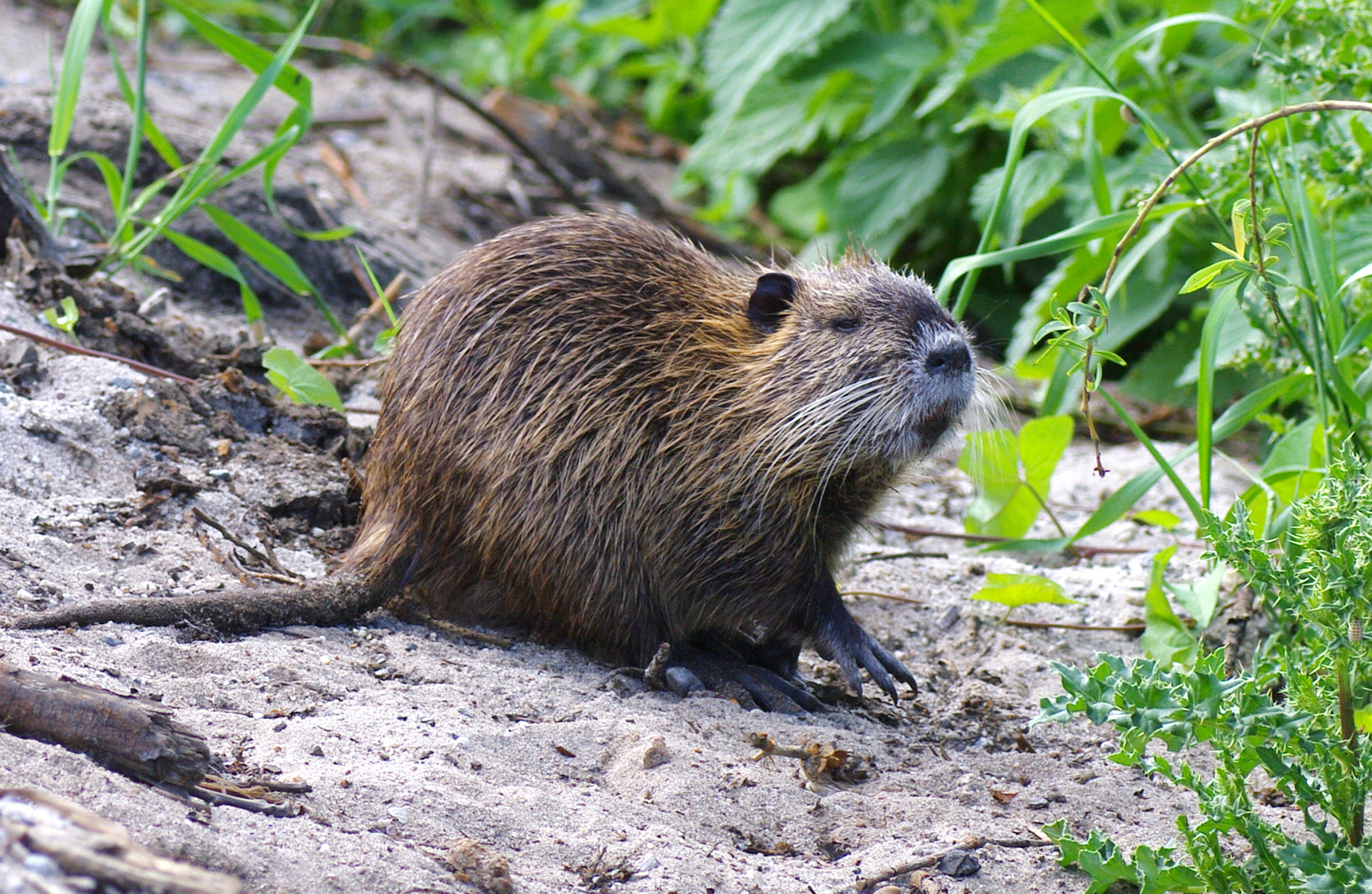
Nutria By Christian Fischer, CC BY-SA 3.0
Nutria are invasive, semi-aquatic, South American rodents first released into Dorchester County, Maryland in 1943. Nutria did not evolve in Maryland’s wetland ecosystems; therefore, there are few predators or natural conditions that control their population. Since their release, nutria have destroyed thousands of acres of wetlands through their destructive feeding habitats. In the Chesapeake Bay, nutria are primarily limited to the Delmarva Peninsula, where they have been found in six Maryland counties and portions of Delaware and Virginia.
A concerted effort to eradicate nutria in Maryland began in 2002 following a two year pilot project to determine if nutria could be eradicated from the Chesapeake Bay and, whether or not the nutria damaged marshlands would recover. The
Chesapeake Bay Nutria Eradication Project, under the direction of a management team initially composed of representatives from the U.S. Fish and Wildlife Service (USFWS), Maryland Department of Natural Resources (MD DNR), Tudor Farms, U.S. Department of Agriculture (USDA), and University of Maryland, began the first phases of the project in April 2002. The USDA’s Animal and Plant Health Inspection Service, (APHIS) Wildlife Services, assumed primary responsibility for project implementation.
As of 2016, all of the known nutria populations have been removed from over a quarter million acres of the Delmarva Peninsula, and the
Chesapeake Bay Nutria Eradication Project is implementing efforts to verify eradication and remove residual animals.
To learn more about nutria eradication efforts as well as current research on nutria, please visit the
Chesapeake Bay Nutria Eradication Project page.
Contact
Jonathan McKnight
Associate Director, Habitat Conservation
Wildlife & Heritage Service
Maryland Dept. of Natural Resources
580 Taylor Ave., E-1
Annapolis, MD 21401
(410) 260-8539
Toll-free in Maryland:
1-877-620-8DNR, Ext. 8539
E-Mail: jonathan.mcknight@maryland.gov